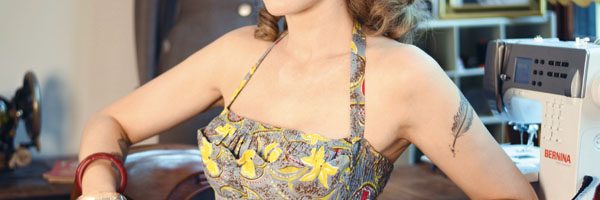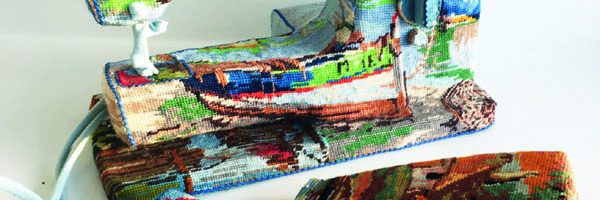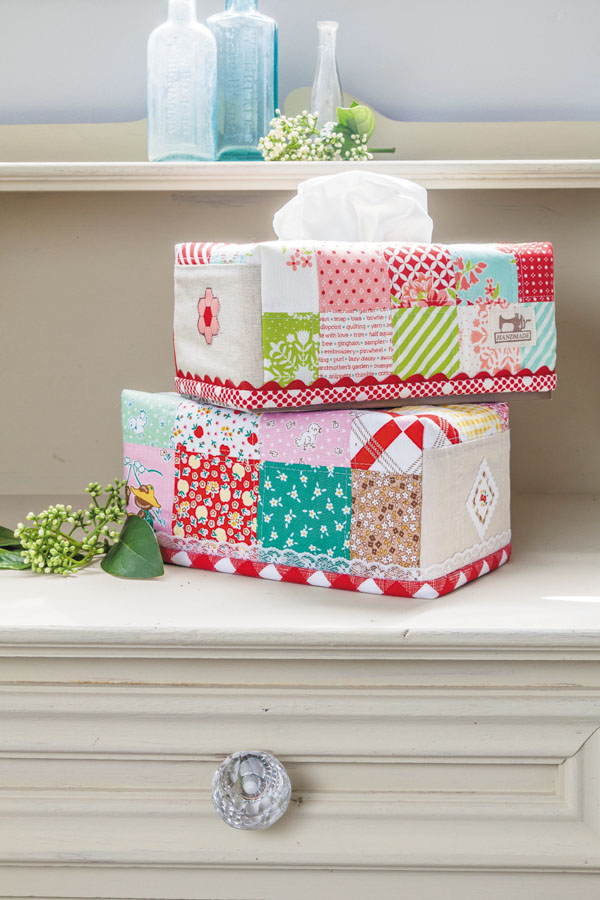
Got spare time? Quick Stitch! Aaaah, Tissue Box!
Banish boring cardboard tissue boxes from your world with Michelle Hickson’s pretty patchwork cover. This is a great project for using up leftover pre-cut strips. For an even faster finish, omit the patchwork and lining and just use one pretty quilted fabric for the whole cover.
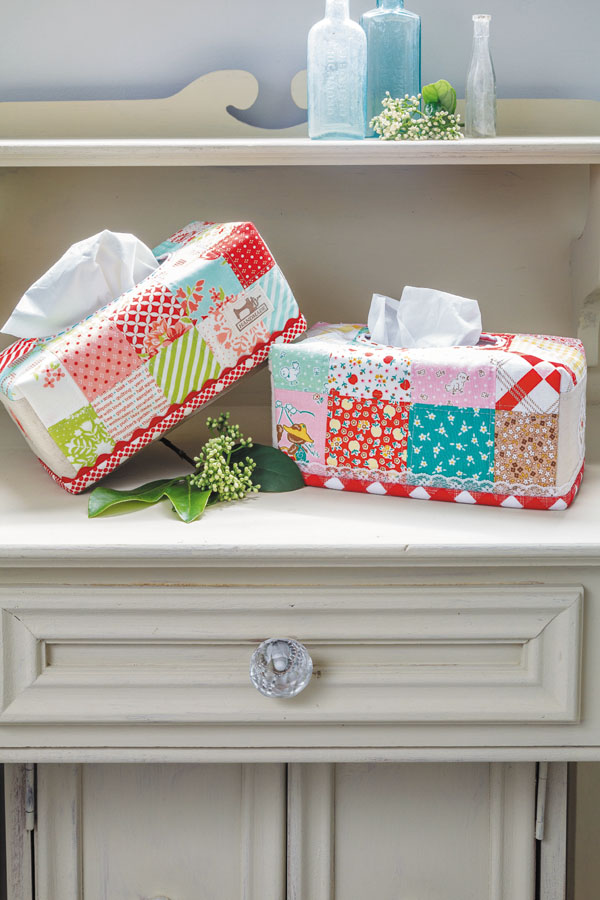
What you’ll need to create this tissue box:
* 30 assorted print fabric squares, 21/2in (patchwork cover)
* Two rectangles of natural linen, 4 x 121/2in (outer cover)
* Fat quarter white tone-on-tone print fabric (lining)
* 21/2in strip of red print fabric (lower binding)
* Rectangle of batting 13 x 18in
* 80cm (7/8yd) ricrac or lace
* Readymade 12mm (1/2in) bias binding (hole binding)
* Print fabric scrap/s (end decorations)
* Stranded embroidery cotton in two coordinating colours
* Fabric label
* Fusible web
* Erasable pen
* Empty tissue box for template
* Sewing machine with 1/4in and walking feet
* General sewing supplies
Finished size: 22cm long x 11.5cm wide x 10cm high (81/2 x 41/2 x 37/8in). A seam allowance of 1/4in is used unless otherwise stated and is included in the cutting.
Create a quilt with different precut fabrics!
What to do:
1 Arrange the 21/2in squares in six rows of five. Join the squares in rows, pressing the seams of odd rows to the right and even rows to the left. Sew the rows together, nesting the seams. Stitch a rectangle of linen to both long sides.
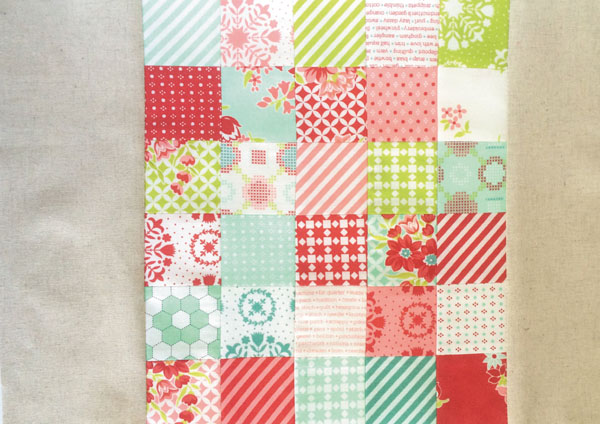
2 Layer the batting under the panel and baste them together. Quilt as desired and machine stitch 1/8in from all the edges. Trim the quilted panel to measure 12 x 161/8in.
3 Iron fusible web to the back of a print fabric scrap and fussy cut a motif from it. Peel off the paper and centre the motif on one of the linen rectangles, 1/2in from the seam. Fuse it in place and machine stitch just inside the edge with a short stitch length.
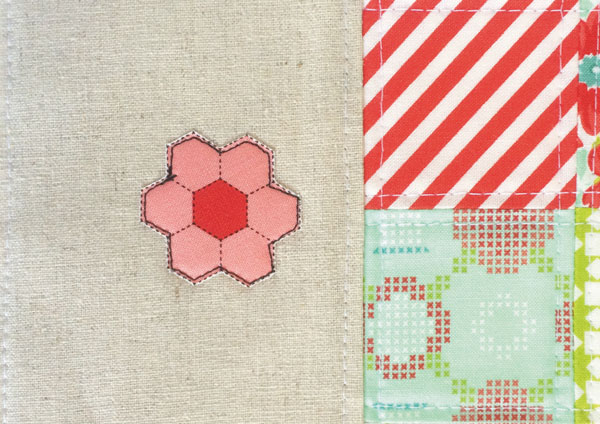
4 Fold the panel in half both ways and mark the centre points along the edges with an erasable pen. Open the empty tissue box out flat. Centre it on the panel and trace around the hole on the patchwork panel with an erasable pen. Machine baste 1/8in outside the line and then cut out the hole on the line.
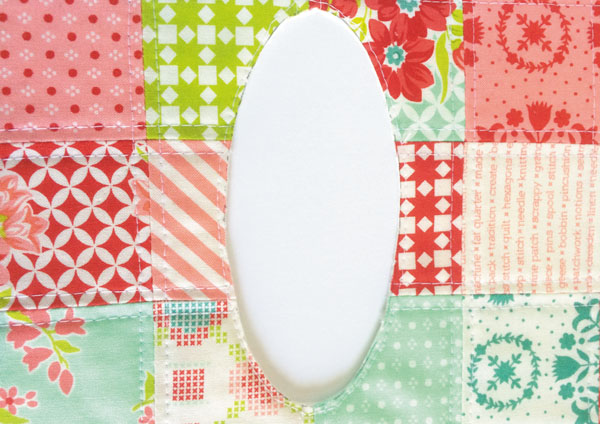
5 Rule a 31/2in square in each corner of the panel. Machine stitch 1/8in outside the line (towards the middle of the panel). Then cut the squares out on the lines.
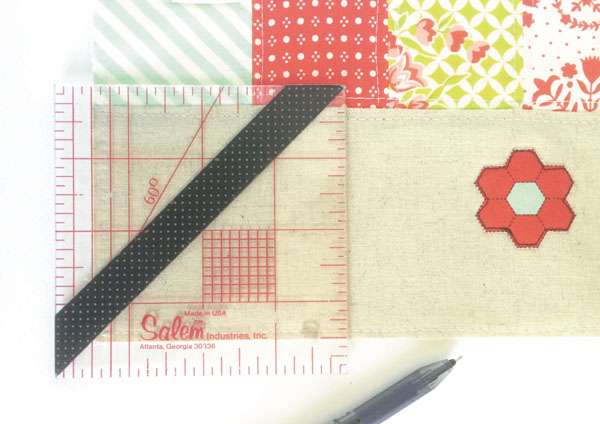
6 Trim the white tone-on-tone print fabric to measure 12 x 161/8in and cut out the hole and corner squares as described in Steps 4 and 5 – you don’t need to baste this time.
7 Pin the outer panel to the lining, wrong sides together and edges matching. Machine stitch 1/8in from the edge of the hole through both layers.
Katrina Hadjimichael’s Jelly Friends quilt will help you use up your precut fabrics in no time.
8 Open up the bias binding and fold under 1/2in at the start. With the right side facing up, sew the bias binding around the edge of the hole with the raw edges level. Sew in the crease of the opened fold. Go around slowly as it’s a bit fiddly and overlap by 1/2in when you get back to the start. Turn the folded edge to the inside and slip stitch it in place by hand.
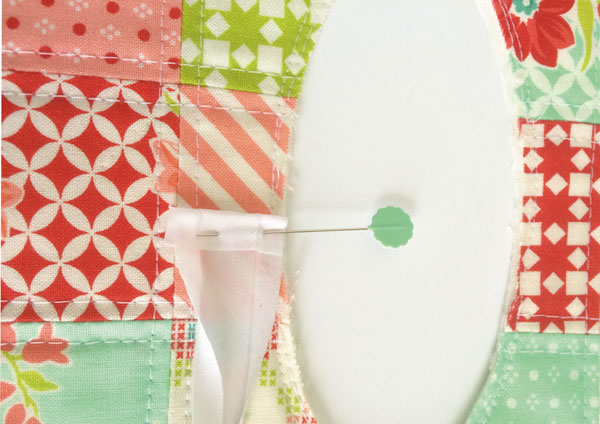
9 Working on the outer panel and lining separately, fold each corner square so the edges match and stitch, right sides together. Repeat for all eight corners.
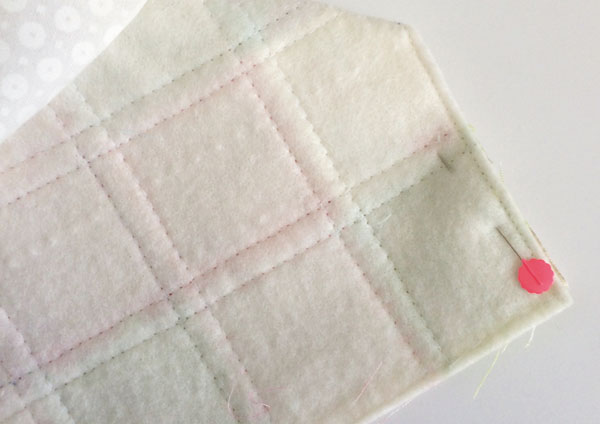
10 Push the corners out and smooth the lining inside the outer cover. Reassemble the tissue box and check that the cover fits.
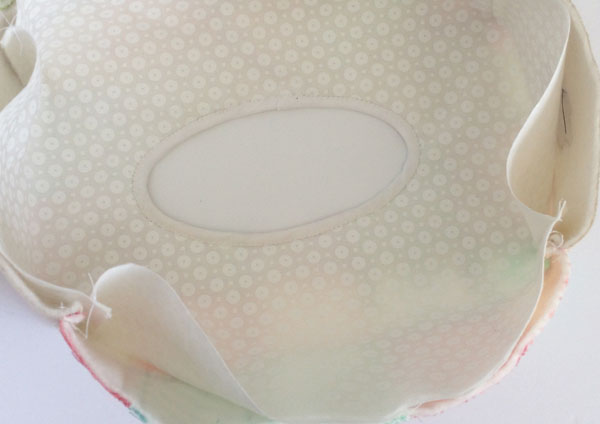
11 Pin the lower edges together and machine baste around them, 1/8in from the edge. Sew a fabric label to one long side of the cover, about 1in up from the bottom edge.
Claire Turpin’s Cotton Candy Carousel cushions are the perfect addition to a little girl’s bedroom!
12 Keeping in mind that the binding will be sewn over the trim with a 1/4in seam, machine baste the ricrac or lace along the bottom edge of the cover about 1/8in from the raw edge, overlapping the ends by 1/2in.
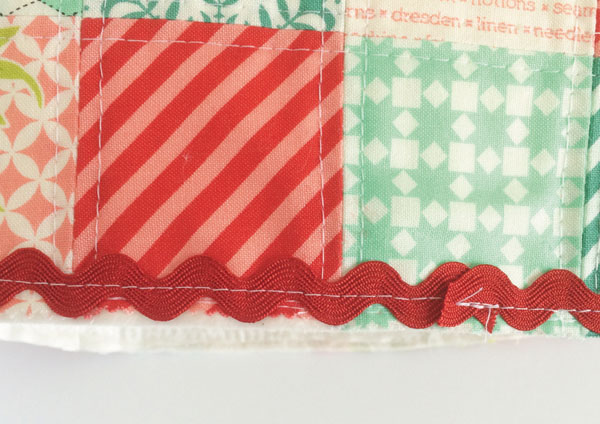
13 Trim the red print fabric strip to 21/4in wide. Fold it in half, wrong sides together and long edges matching, and press.
14 Stitch the binding to the bottom edge of the cover, right sides together and raw edges level, leaving about 4in free at both ends for joining. Michelle recommends using a walking foot for this step. Join the ends neatly and finish sewing the binding to the cover. Turn the binding over and stitch it by hand to the inside of the cover.
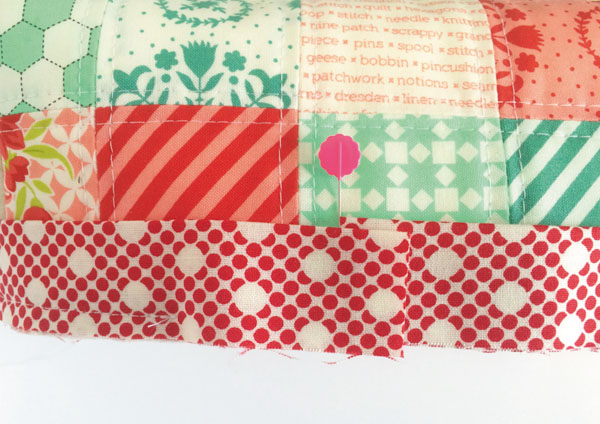
15 Using six strands of thread, sew large running stitches around the centre of the bias binding around the hole, then change to another colour and add French knots between the running stitches to decorate the opening. Or vary the stitches as you wish.
More of Michelle Hickson
Blog: coleandtaffy.com
Instagram: www.instagram.com/coleandtaffy

